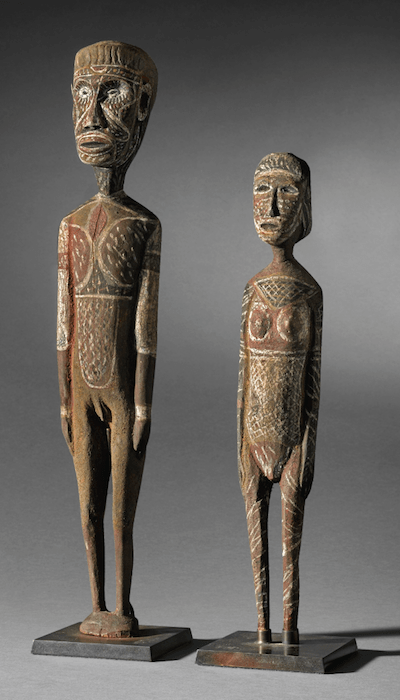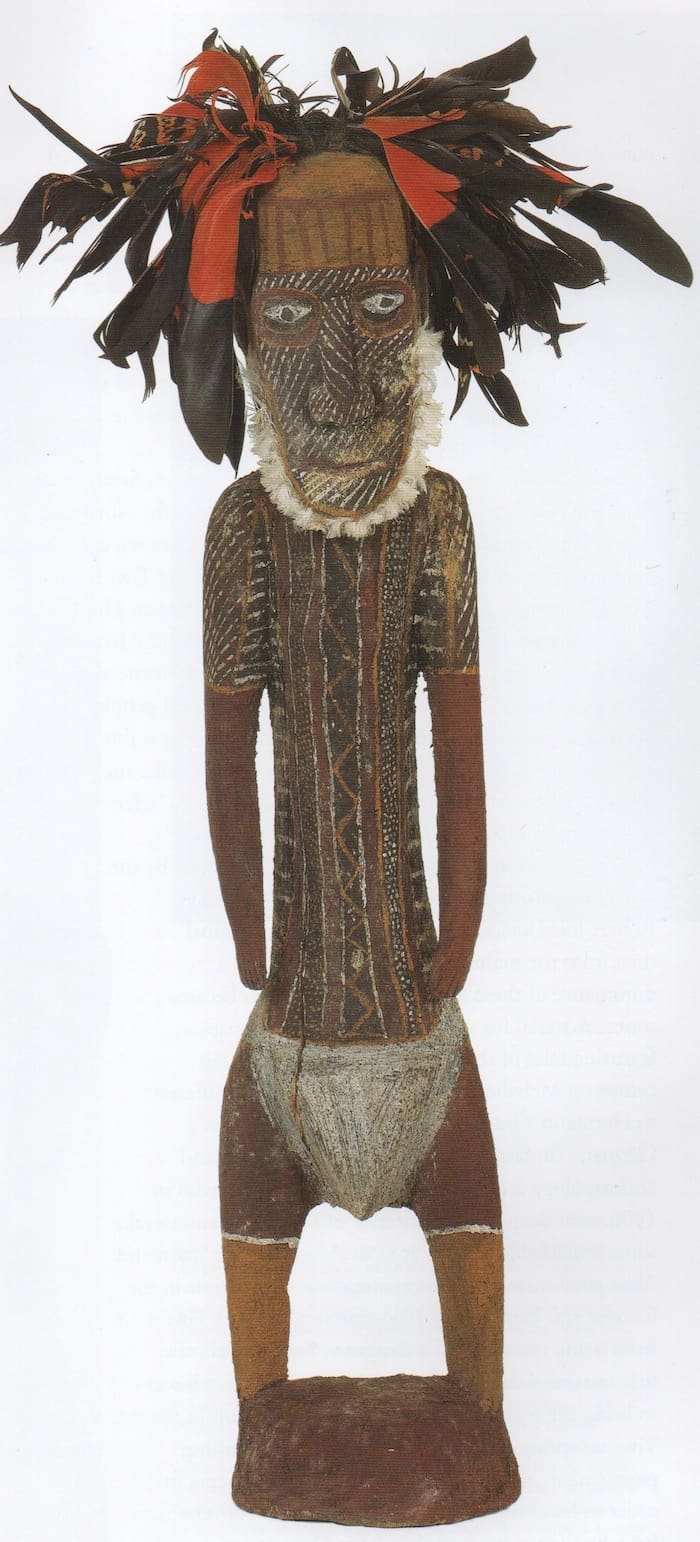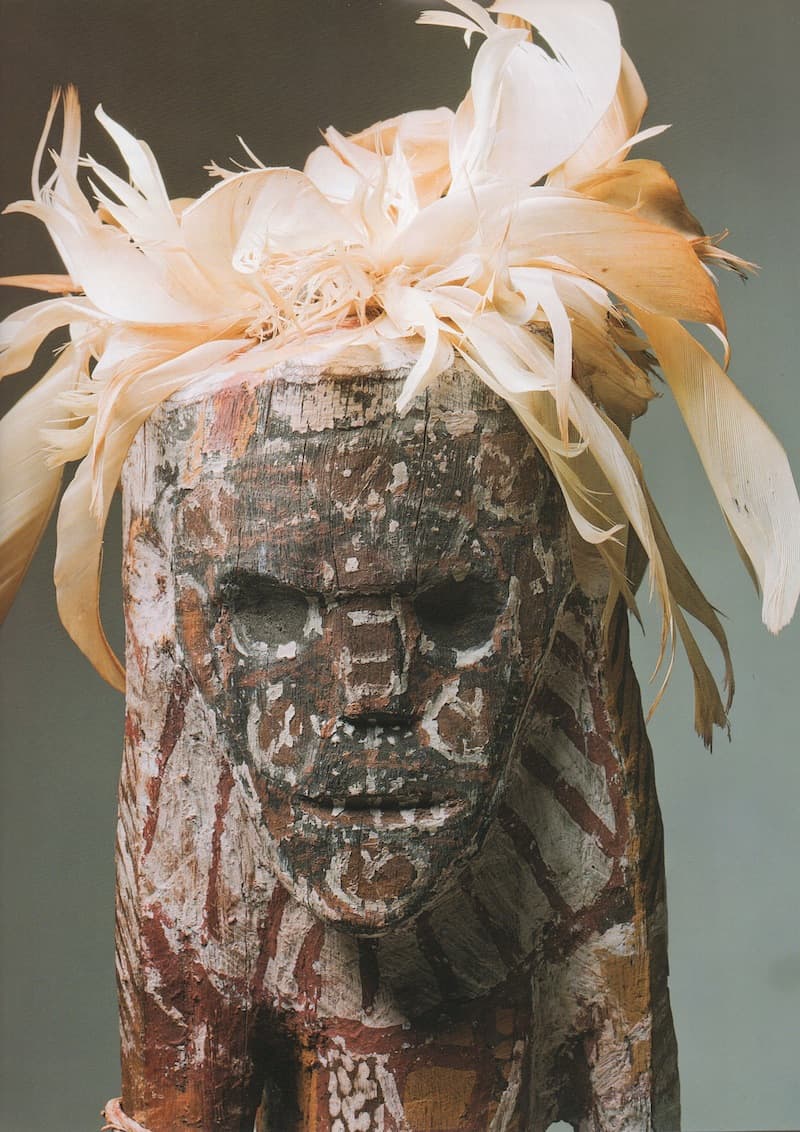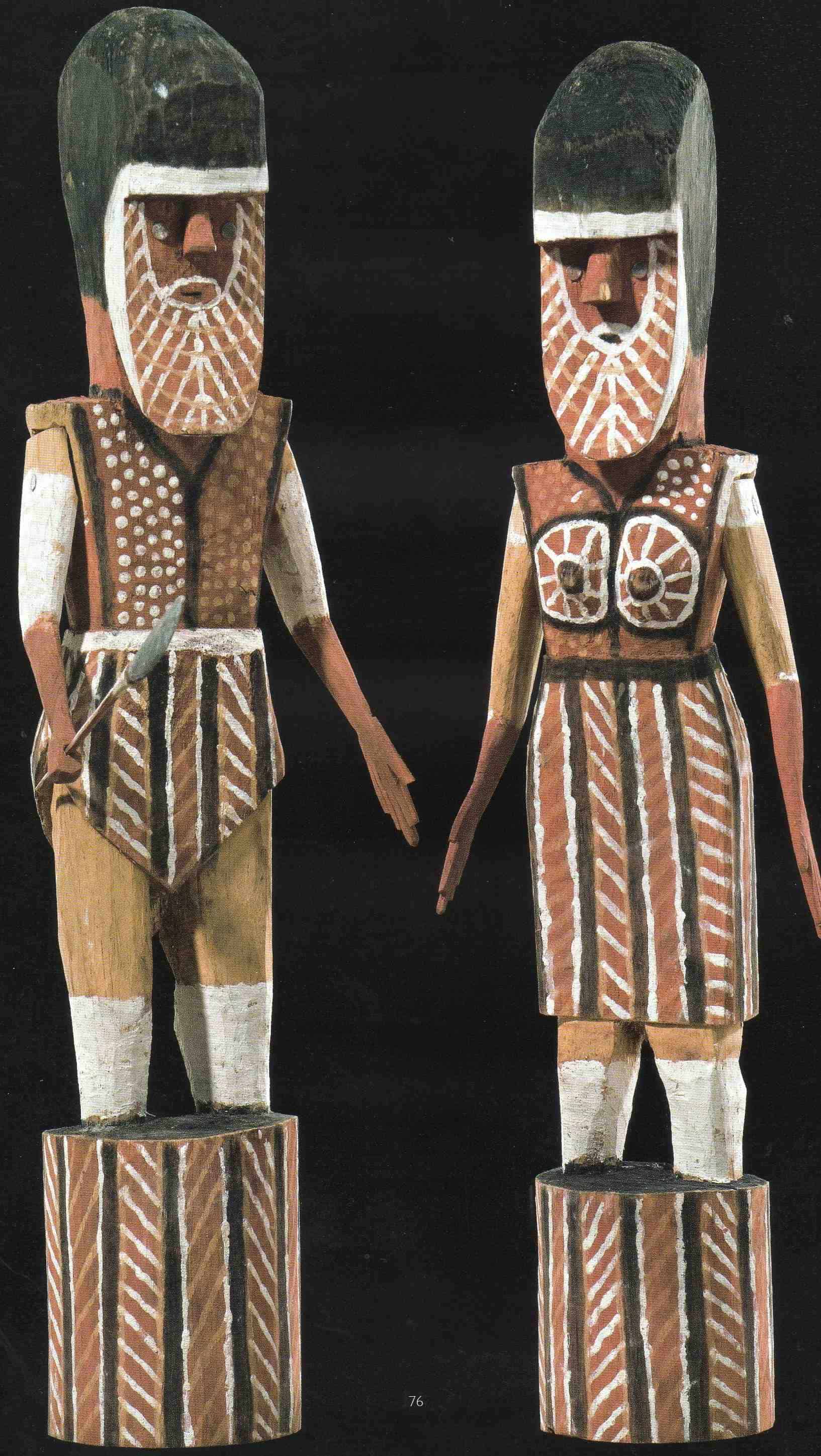Aboriginal Statue
Aboriginal Statue carving originated in Yirrkala and the Tiwi Islands. Some early Aboriginal statues can be collectable.
The aim of this article is to assist readers in identifying if their aboriginal statue is an early example. It shows examples from different early artists.
If you have a Aboriginal statue to sell please contact me. If you want to know what your Aboriginal statue is worth to me please feel free to send me a Jpeg because I would love to see it.
Before European settlement of Australia, aboriginal statues were ephemeral. After ritual use statues made and empowered for a particular ceremony are discarded.
Unlike Papua New Guineans or Africans, Aboriginal people did not make wooden figures and venerate them over long periods of time.
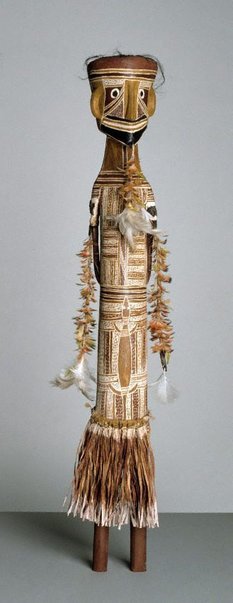
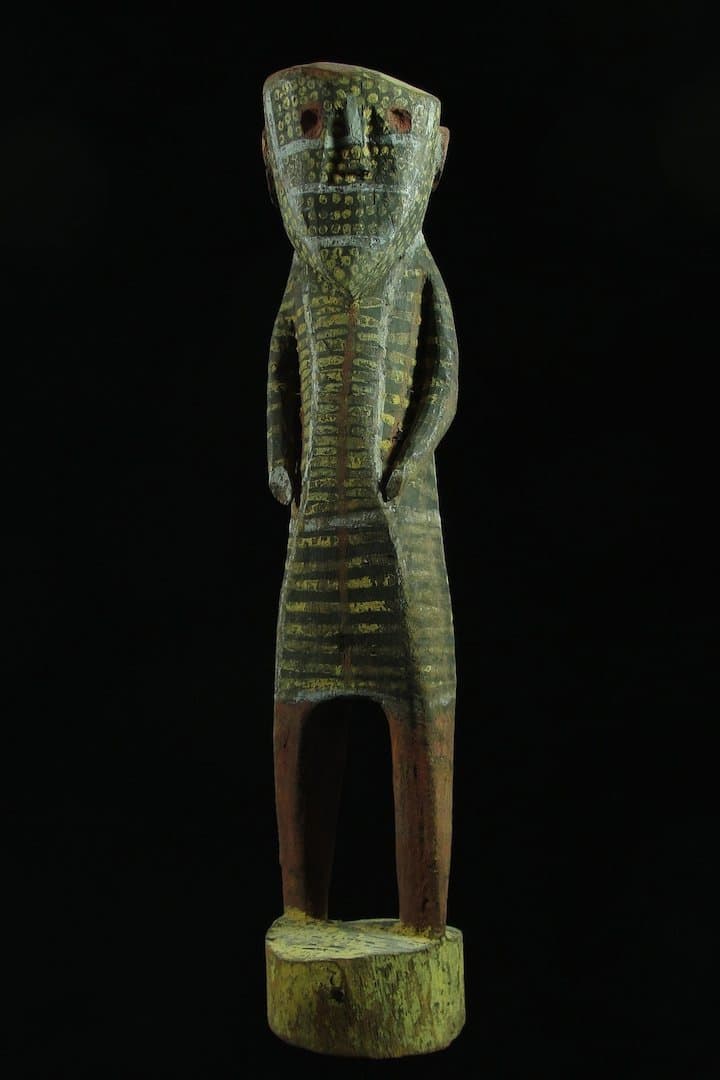
Eastern Arnhem Land Aboriginal statue
The earliest statue from this area are Lorrikon. Lorrikon are hollowed log bone receptacles painted with totemic designs. According to oral history, Carved Human figures from Yirrkala in Arnhem land were first created by Djuakan. They were first carved at the turn of the 19th Century. Djuakan got the idea from an old Macassan Fisherman. He carved a human head on top of a burial post.
In 1948 a collector called Mountford recorded the carving of full-length human figures. These full-length human figures are painted in clan motifs. The surface painting on sculpture refers to aspects of legends and myths and to clan designs related to the figure represented. Local Yirrkala artists gained access to far better tools like pocket knives, rasps, and axes During World War II.
Eastern Arnhem land also has ceremonial sculptures made from bark, string, feathers, human hair or other fibers. These are ceremonially important items. They are symbolic representations of animals food and birds. They sometimes have small painted wooden heads fixed to the top. These sculptures called Rangga are seldom sold. Rangga are collectible in their own right.
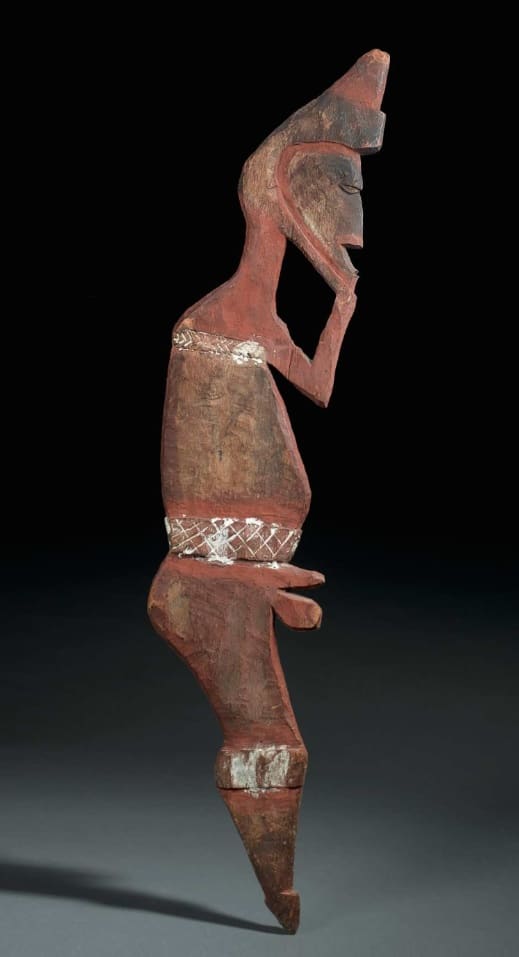
Torres Strait Sculpture
There are a few old sculptures from the Torres Straits. They were made to help with the growing of tobacco. They are flat and two dimensional.
Torres strait statues are very rare and highly collectible.
The Torres Straits Islanders also Sculpted masks from wood and turtle shell
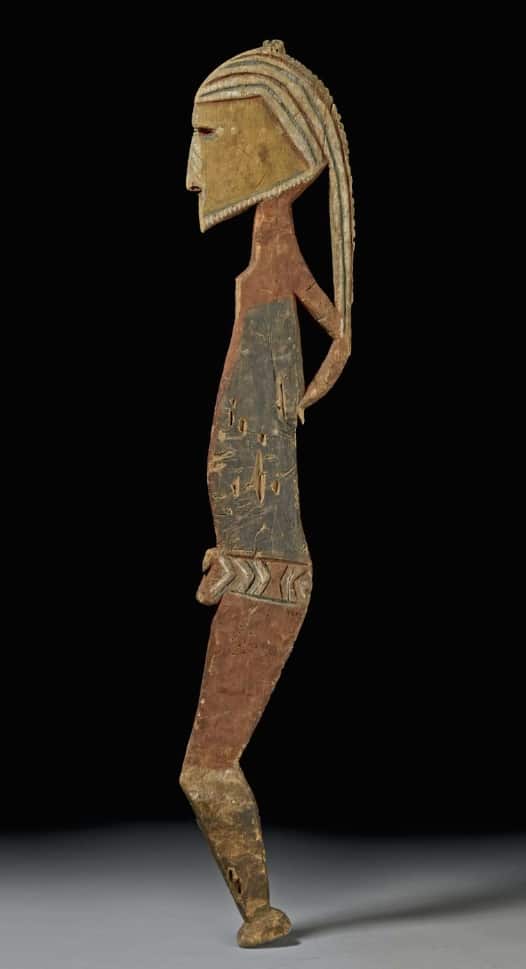
Tiwi Aboriginal statue
Figurative Aboriginal statues were first collected at Parunear Bathurst Island. Painted figures were left at the graveside. This was so that the ghost of the recently departed would haunt the wooden figure instead of the closest kin. It was from this small community that many of the most important and collectible Aboriginal statue Artists worked.
Initially, they worked making posts and spears for traditional use. As European demand increased they soon made the statues for sale as well.
Tiwi Island Artists often traded sculptures with the Mission on Bathurst Island for supplies. The people at Paru referred to themselves as Mandimbula. They maintain traditional beliefs, particularly the Pukumani ritual.
The Pukumani ritual includes the carving of Painted Pukumani poles and large painted Ceremonial Spears. An artist called Katuhe was the first to make a figurative carving. He carved a Pukumani pole with a figure on the top. Katu may have been inspired by wooden sculptures he had seen in Darwin at the end of the second world war. Tiwi Sculptures have painted designs in traditional skin design patterns.
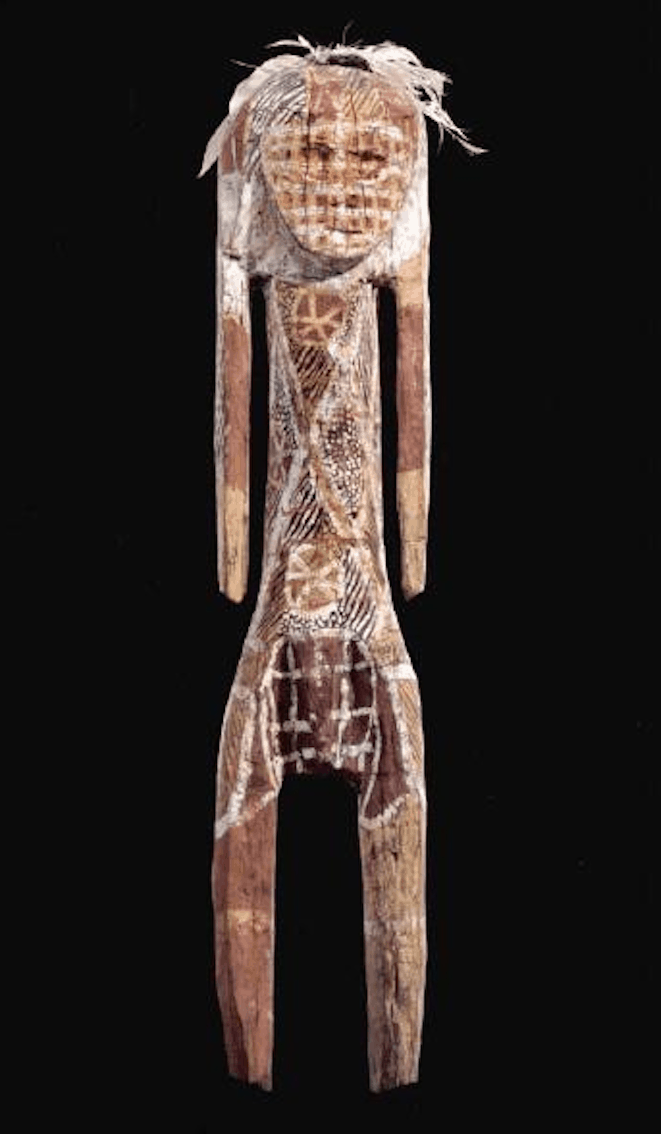
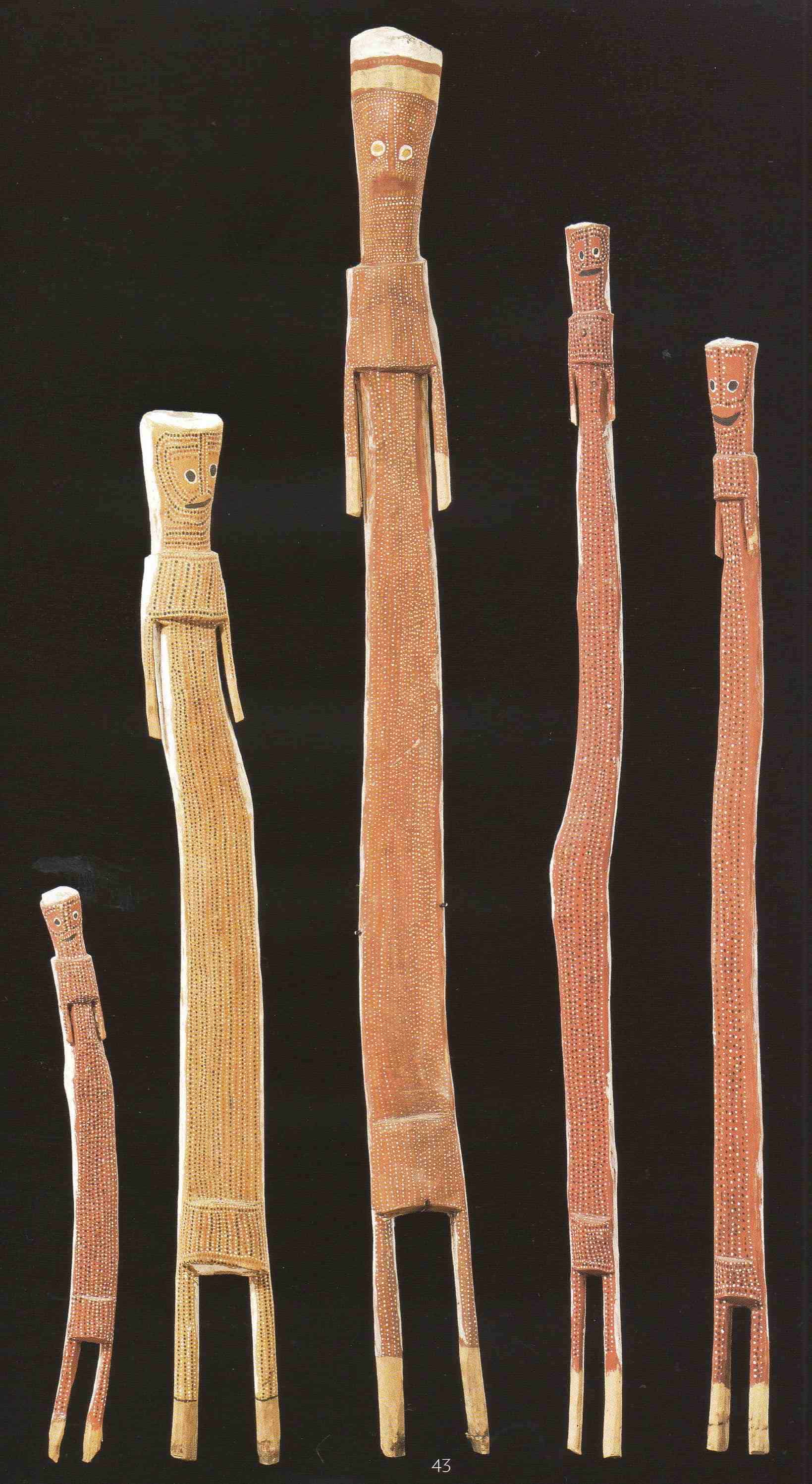
Central and Western Arnhem Land Aboriginal statue
The origins of Central Arnhem Land Aboriginal statues is very poorly documented. In the Berndt collection at the University of Western Australia, there are some small bee wax figures. These early sculptures come from the “Honey Men ceremony”. The majority of figures associated with the wild honey men have a very distinct diamond pattern on the body. A term used to refer to sculpture from this area is Mokoy Figures. Other figures from this area depict Mimi spirits . Mimi spirits live in the rocky areas of Western Arnhem land . Mimih are always long and slender.
Aboriginal artists still make statues today for sale at the Darwin Aboriginal Art Fair
All images in this article are for educational purposes only.
This site may contain copyrighted material the use of which was not specified by the copyright owner.
Some Examples of Collectable Aboriginal statue
If this post has been informative please take the time and make the effort to share it on social media. By clicking any of the share buttons below you create a link from your social site to this article. Links are what Google uses to calculate what information on the web is useful. By sharing this article you are letting Google know you found my article/images of some value. Thanks!
*Aboriginal Sculpture as discussed in this article refers to figurative wooden sculptures. It does not include Churingas or elaborate dancing headdresses

